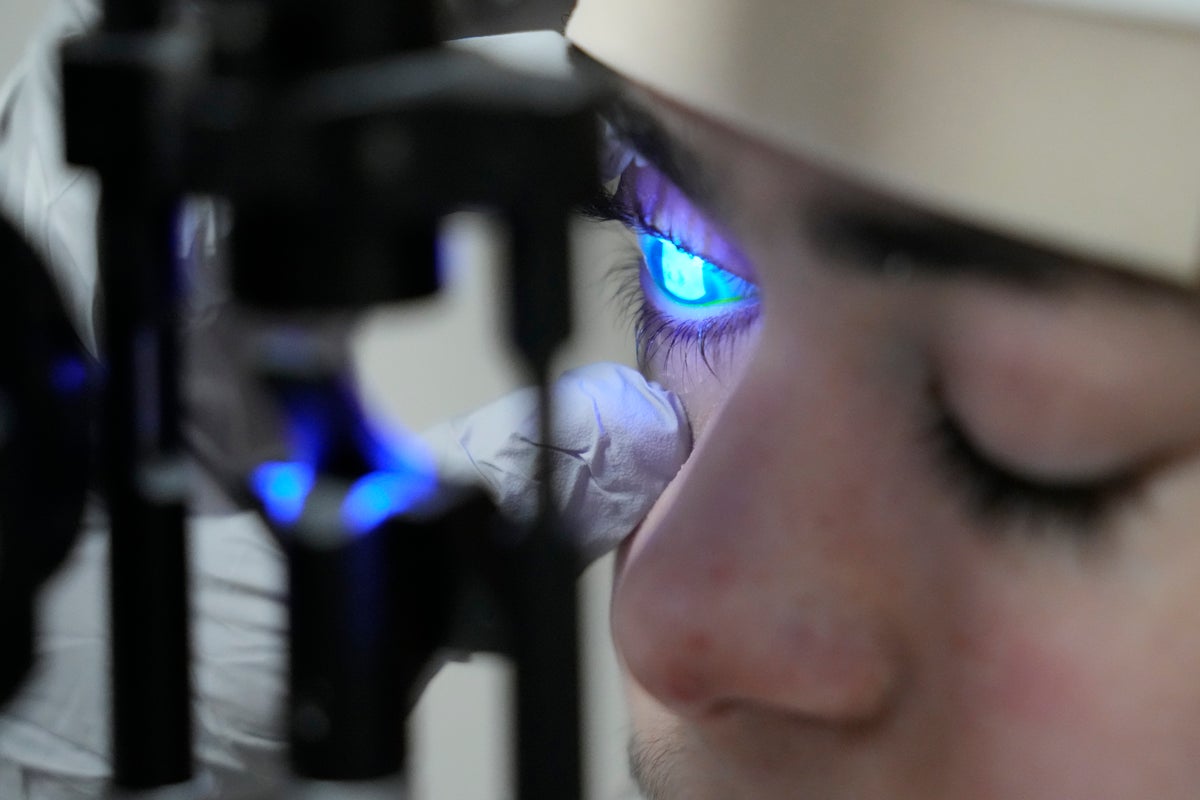
Dr. Alfonso Sabater pulled up two photos of Antonio Vento Carvajal’s eyes. One showed cloudy scars covering both eyeballs. The other, taken after months of gene therapy given through eyedrops, revealed no scarring on either eye.
Antonio, who's been legally blind for much of his 14 years, can see again.
The teen was born with dystrophic epidermolysis bullosa, a rare genetic condition that causes blisters all over his body and in his eyes. But his skin improved when he joined a clinical trial to test the world’s first topical gene therapy. That gave Sabater an idea: What if it could be adapted for Antonio's eyes?
This insight not only helped Antonio, it also opened the door to similar therapies that could potentially treat millions of people with other eye diseases, including common ones.
Antonio’s mom, Yunielkys “Yuni” Carvajal, teared up thinking about what Sabater did for her son.
“He’s been there through everything,” she said in Spanish during a visit to the University of Miami Health System’s Bascom Palmer Eye Institute. “He’s not only a good doctor but such a good human being and provided us with hope. He never gave up.”
The family came to the U.S. from Cuba in 2012 on a special visa allowing Antonio to get treatment for his condition, which affects around 3,000 people worldwide. He had surgeries to remove scar tissue from his eyes, but it grew back. Antonio's vision kept getting worse, eventually deteriorating so much that he didn't feel safe walking around.
Sabater had no answers then, and tried to reassure the boy: "I'll find a solution. I just need some time. I’m working on it.”
"'Yeah, I know you’re going to do it,’” Sabater recalled Antonio saying. “That gave me the energy to continue.”
At one point, Carvajal told Sabater about the experimental gene therapy gel for Antonio's skin lesions. He contacted drugmaker Krystal Biotech to see if it could be reformulated for the boy's eyes.
Suma Krishnan, co-founder and president of research and development for the Pittsburgh-based company, said the idea made sense and “it didn’t hurt to try it."
Antonio's condition is caused by mutations in a gene that helps produce a protein called collagen 7, which holds together both skin and corneas. The treatment, called Vyjuvek, uses an inactivated herpes simplex virus to deliver working copies of that gene. The eyedrops use the same liquid as the skin version, just without the added gel.
After two years, which included testing the drug in mice, the team got “compassionate use” approval from the U.S. Food and Drug Administration and permission from university and hospital review boards. Last August, Antonio had surgery on his right eye, after which Sabater started treating him with the eyedrops.
Krishnan said they were cautious, frequently watching to see that it was safe.
Antonio's eye recovered from the surgery, the scarring didn't return and there was significant improvement each month, Sabater said. Doctors recently measured the vision in Antoni's right eye at a near-perfect 20/25.
This year, Sabater began treating Antonio's left eye, which had even more scar tissue. That one is also steadily improving, measuring close to 20/50, which Sabater said “is pretty good vision.”
Antonio comes to the eye institute for checkups almost weekly and gets the drops once a month. During visits, Antonio must wear protective clothing covering his arms, hands, legs and feet. Like other kids with the condition — who are sometimes called “butterfly children” — his skin is so fragile that even a touch can wound him.
Antonio still uses the skin gel, which was approved by the FDA in May and can also be used off-label on eyes. It doesn’t modify DNA, so it’s not a one-time treatment like many gene therapies.
Sabater, director of the Corneal Innovation Lab at the eye institute, said gene therapy eyedrops could potentially be used for other diseases by changing the gene delivered by the virus. For example, a different gene could be used to treat Fuchs’ dystrophy, which affects 18 million people in the U.S. and accounts for about half the nation's corneal transplants.
The prospect of treating more conditions this way is “exciting," said Dr. Aimee Payne, a dermatology professor at the University of Pennsylvania who isn't involved in the research. The approach "delivers gene therapy that really addresses the root cause of disease.”
With his vision restored, Antonio has enjoyed a typical teen pastime he's wanted to do for quite a while: playing video games with his friends. And he finally feels safe walking around.
Sabater said the two-year journey seeking government and hospital approvals “was worth it. Just for Antonio, it was worth it ... but also because it opens the space to treat other patients in the future.”
——
Ungar reported from Louisville, Kentucky.







